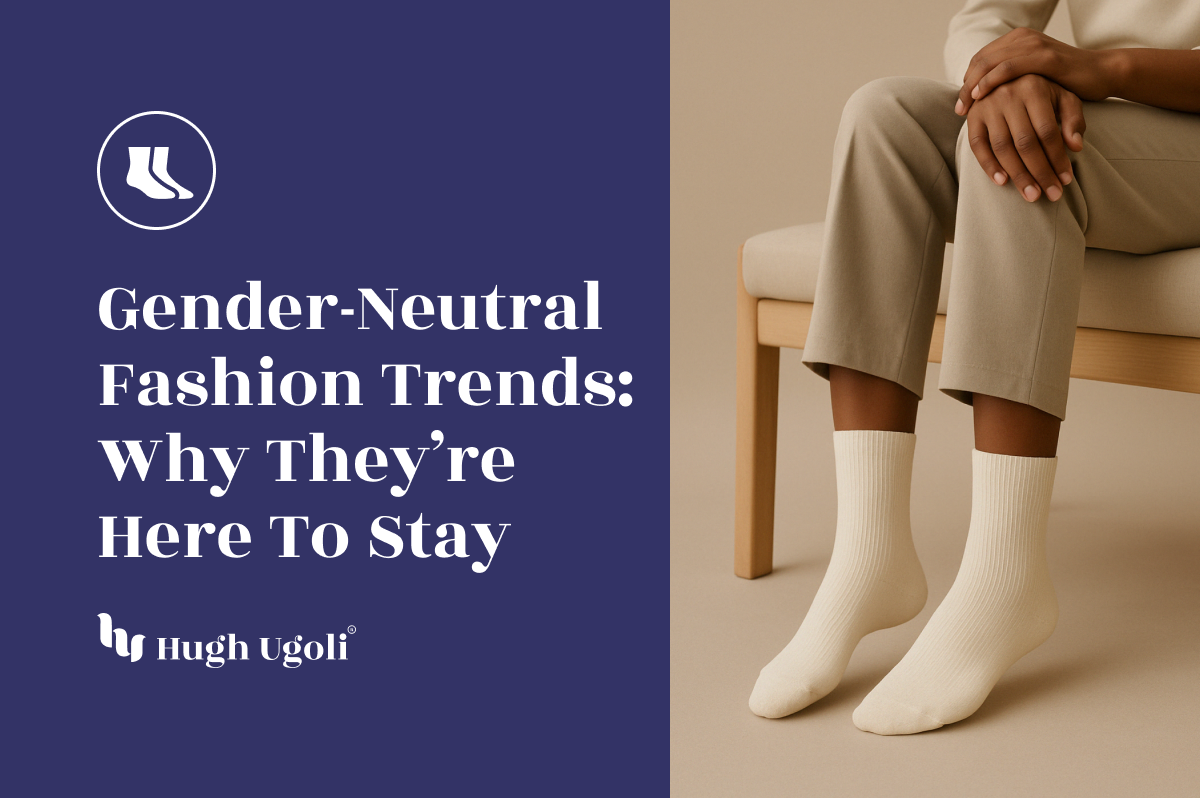Socks are often categorized by gender, but what are the reasons behind this classification? Understanding the differences in sock sizing and design can help clarify why socks are gendered and how to choose the right pair for your needs.
Sock Sizing Differences
Men’s Socks:
- Size Range: Typically larger and wider to accommodate men’s foot sizes. Men’s socks often range from sizes 8-12, with larger options available.
- Fit: Designed to fit more generously, providing comfort for larger feet.
Women’s Socks:
- Size Range: Generally smaller and narrower to match women’s foot sizes. Women’s socks usually range from sizes 5-10.
- Fit: Tailored to fit snugly on smaller feet, ensuring comfort and support.
The differences in sock sizing ensure a better fit and more comfort, as wearing socks that are too large or too small can lead to discomfort and even foot health issues.

Design and Style Variations
Men’s Socks:
- Design: Often feature more muted colors and simpler patterns. Functional and practical designs are more common.
- Purpose: Designed for durability and comfort, suitable for various activities from work to casual wear.
Women’s Socks:
- Design: Available in a wider range of colors, patterns, and styles. Fashion-forward designs are prevalent.
- Purpose: Balances style with comfort, suitable for different occasions from everyday wear to formal events.
These design differences cater to the varied preferences and fashion trends among men and women.
Material and Thickness
Men’s Socks:
- Material: Commonly made from robust materials like cotton, wool, and synthetic blends.
- Thickness: Generally thicker to provide durability and warmth.
Women’s Socks:
- Material: Often made from softer, more delicate materials such as bamboo, cotton, and blended fabrics.
- Thickness: Can range from very thin (for dress socks) to medium thickness (for casual and athletic wear).
Material choice impacts the sock’s comfort, breathability, and suitability for different activities.
Why Gendered Socks?
The gendering of socks primarily stems from anatomical and stylistic differences. Men’s and women’s feet differ in size and shape, necessitating different sizing and fit. Additionally, fashion preferences influence design and color choices, leading to a natural division in sock styles.
However, many socks are now designed to be unisex, accommodating both men and women. For instance, Hugh Ugoli’s Unisex Cotton Diabetic Crew Socks offer comfort and functionality suitable for all.
Choosing the Right Socks
When selecting socks, consider the following factors:
- Size: Ensure the socks fit well to prevent discomfort and foot issues.
- Material: Choose based on the activity and climate.
- Design: Pick styles that match your personal preference and occasion.
Conclusion
For more insights on sock choices, check out our blog on What are the differences between men's socks and women's socks?
Understanding why socks are gendered helps in making informed choices that enhance comfort and style in your daily wear. Whether you prefer gender-specific or unisex socks, the key is finding the right fit, material, and design for your needs.
















